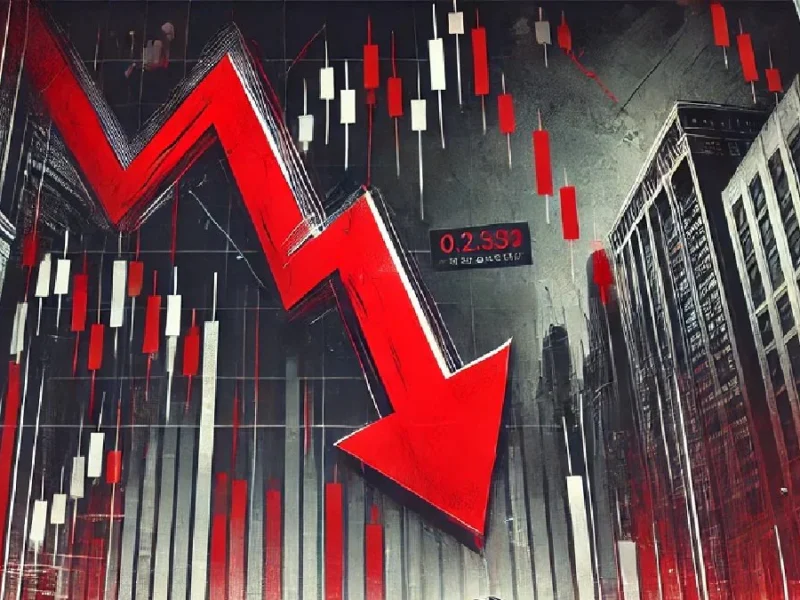The cryptocurrency world has been both a dream and a nightmare for many investors. While some have made millions through savvy trades and early investments, others have lost everything. The volatility of the crypto market has led to some catastrophic losses, with countless investors left devastated by sudden crashes, scams, and misguided decisions. Here are some of the most notable stories of crypto catastrophes and the lessons learned from them.
One of the most infamous disasters in the history of cryptocurrency occurred with the Mt. Gox exchange. At its peak in 2013, Mt. Gox handled over 70% of all Bitcoin transactions globally. However, in February 2014, the platform suddenly collapsed, claiming that hackers had stolen 850,000 Bitcoins, worth around $450 million. The Mt. Gox scandal became one of the largest thefts in the history of the cryptocurrency market, and thousands of investors were left without their funds.
The bankruptcy proceedings took years, and many users have never been fully compensated for their losses. The Mt. Gox debacle highlighted the risks of entrusting funds to unregulated exchanges and demonstrated the need for stronger security measures in the crypto industry. For many investors, Mt. Gox was a harsh lesson in the dangers of storing significant assets on third-party platforms without proper safeguards.
Another catastrophic event in the crypto world was the rise and fall of BitConnect, a platform that promised investors massive returns on their cryptocurrency investments. BitConnect operated as a lending program where users were encouraged to invest in Bitcoin in exchange for the BitConnect token, with promises of returns as high as 40% per month. The platform’s marketing was aggressive, drawing in both novice and seasoned investors looking for easy profits in the booming crypto market.
However, in January 2018, BitConnect shut down suddenly, leaving investors holding worthless tokens and a massive loss. The platform was widely regarded as a Ponzi scheme, where early investors were paid with funds from newer investors, creating an unsustainable model. When BitConnect collapsed, thousands of investors lost billions of dollars, and many were left financially ruined. The BitConnect fiasco is often cited as one of the most significant Ponzi schemes in the history of cryptocurrency, a cautionary tale about the dangers of get-rich-quick schemes in the unregulated crypto market.
In 2018, an entrepreneur known as “Crypto King” rose to prominence in Canada for his involvement in a cryptocurrency exchange called QuadrigaCX. Gerald Cotten, the founder and CEO of QuadrigaCX, claimed to have a fortune in Bitcoin and other digital assets held in cold storage. However, in December 2018, Cotten died unexpectedly in India, and it was revealed that he was the only one who knew the passwords to access the exchange’s cold wallets.
As a result, over $190 million in client funds became inaccessible. QuadrigaCX investors were left scrambling for answers, but Cotten’s sudden death and the lack of transparency from the company made the situation even more complicated. Many speculated that Cotten had faked his death to cover up a scam, as his sudden demise came at the same time as the company’s financial collapse. The QuadrigaCX scandal exposed the risks of trusting a single individual with the entirety of an exchange’s security and the importance of diversifying asset storage.
The initial coin offering (ICO) boom of 2017-2018 brought in waves of new investors eager to get in on the next big cryptocurrency. ICOs are a fundraising method where startups issue new tokens to investors in exchange for existing cryptocurrencies like Bitcoin or Ethereum. While some ICOs became successful, others became fraudulent or failed to deliver on their promises.
One of the most notable examples was the ICO of BitPetite, which raised millions of dollars before being exposed as a scam. Investors were promised a decentralized platform to revolutionize the cryptocurrency industry, but the project never materialized. Similar scams occurred during the ICO boom, and countless investors lost substantial money. These failures resulted in tighter regulations for ICOs and highlighted the importance of conducting thorough due diligence before investing in any cryptocurrency project.
After reaching an all-time high of nearly $20,000 in December 2017, Bitcoin’s price plummeted in early 2018. The sharp decline wiped out billions of dollars in value, leaving many investors devastated. Some had bought Bitcoin at its peak, only to watch it lose over 80% of its value over the following months. For these investors, what started as a promising opportunity to secure financial freedom quickly became a painful and costly lesson in market volatility.
This crash was a wake-up call for many who had been swept up in the hype of Bitcoin’s meteoric rise. The event emphasized the inherent risks of investing in highly volatile assets, and many first-time crypto investors learned the hard way that prices could drop just as quickly as they rose.
In recent years, decentralized finance (DeFi) platforms have gained popularity, allowing users to lend, borrow, and trade cryptocurrencies without traditional intermediaries like banks. However, in 2020, several DeFi platforms experienced significant issues, with users losing large amounts of money due to system glitches and “liquidations.”
For instance, in the “Black Thursday” crash of March 2020, the value of many DeFi tokens plummeted, causing massive liquidations. Investors who had used leverage to borrow funds and trade were hit hardest, as their positions were forcibly sold to cover their debts. This event underscored the risks of using leverage in a volatile market and the challenges of navigating the rapidly evolving DeFi space.
Conclusion
The crypto world can offer enormous profits, but as these stories show, it can also be incredibly unforgiving. The volatility, lack of regulation, and susceptibility to fraud make cryptocurrency a high-risk investment. While some have struck it rich, others have lost everything. For those considering entering the crypto market, these disasters serve as important lessons: always do your research, understand the risks, and be prepared for the potential consequences of a highly speculative investment.



